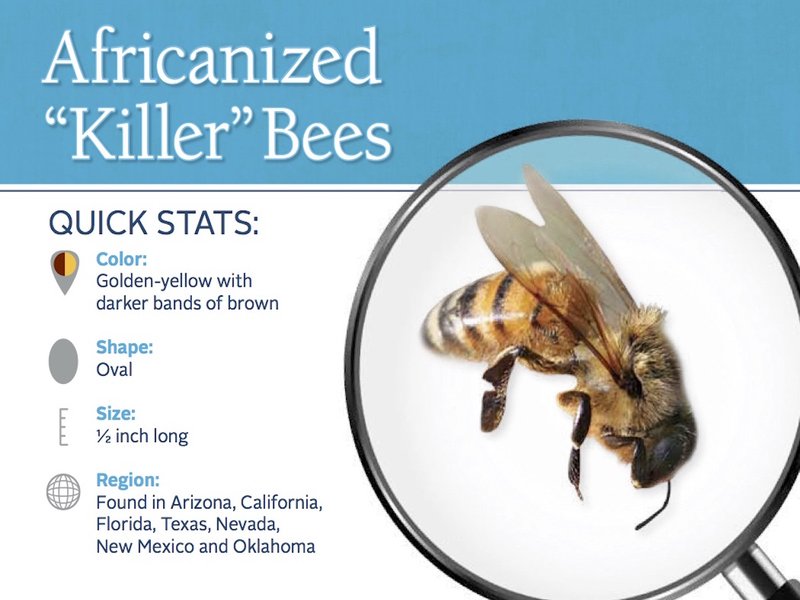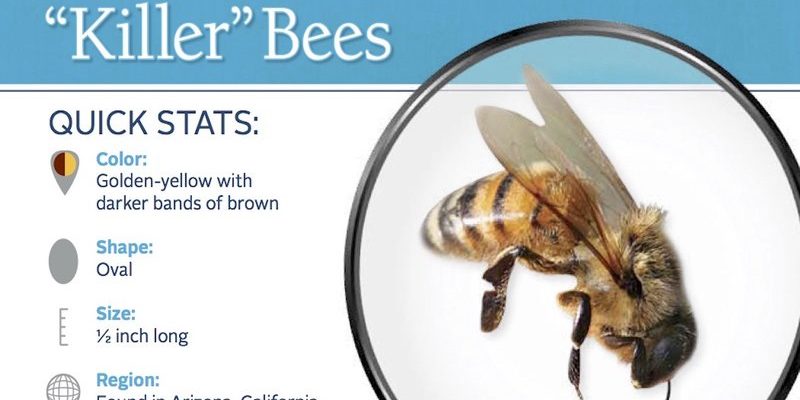
Imagine you’re out in your garden, enjoying the beauty of nature. Suddenly, you see a swarm of bees buzzing around. At that moment, you might wonder if they are just friendly pollinators or something more aggressive. Let’s explore how to recognize these Africanized bees so you can stay safe while still appreciating the amazing world of bees.
What are Africanized Bees?
Africanized bees, often called “killer bees,” are a result of crossbreeding between European honeybees and African honeybees. This mix was first introduced in Brazil in the 1950s, and since then, they’ve spread northward across South America and into parts of the United States.
These bees are known for their aggressive behavior. While all bees can sting, Africanized bees are more likely to defend their hive vigorously, especially if they feel threatened. They react quickly to intruders and can chase them for long distances.
It’s important to note that their aggression is a defense mechanism, not something that makes them inherently dangerous. They play a crucial role in the ecosystem by pollinating plants, just like other bees. They just approach defense a little differently.
Physical Appearance: How to Spot Them
Identifying Africanized bees at a glance can be tricky because they look similar to European honeybees. However, there are a few key differences you can look out for:
- Size: Africanized bees are generally smaller than European honeybees. They tend to be a bit more slender, with a body length of about 1/2 inch.
- Color: Their coloration is also slightly different; they have darker bands on their abdomens. This can make them appear fuzzy compared to other bees.
- Hair: If you take a closer look, Africanized bees often have less hair on their bodies than European honeybees, which can also impact their appearance.
If you’re close enough to see their details—like their size and color—it can help you identify them more accurately. But remember, getting too close can lead to trouble, so it’s best to observe from a safe distance.
Behavior Patterns of Killer Bees
When you’re trying to identify killer bees, paying attention to their behavior can be just as important as their appearance. Africanized bees are highly defensive of their hives. Here are some behaviors to watch for:
- Swarming: They tend to swarm more than other bees. If you see a large group of them buzzing together, it’s worth taking caution.
- Persistence: Unlike typical honeybees, which might sting only once and retreat, Africanized bees can pursue a threat up to a quarter of a mile. They don’t give up easily!
- Nest Location: They often build their nests in unusual places, like hollow trees, shrubs, or even inside walls—places that might surprise you.
If you notice these behaviors, it might be a good idea to steer clear and alert someone who can manage the situation, like a local pest control expert or beekeeper.
Understanding Their Swarming Habits
Africanized bees are notorious for swarming, a behavior that can be alarming. Swarming happens when a hive becomes crowded. They will leave the existing colony to establish a new one. During this time, they can become more aggressive.
Why does this matter? If you’re out hiking or even enjoying a picnic, you could unexpectedly find yourself near a swarm. It’s crucial to recognize the signs of a swarm. You might notice:
- Many bees clustered together in a ball, often hanging from trees or structures.
- Increased buzzing sounds around you.
- A sudden drop in bee activity around a hive, usually followed by a large number of bees leaving together.
If you encounter a swarm, the best action is to calmly leave the area and avoid any sudden movements that might provoke them.
How to Keep Safe Around Bees
Understanding how to identify killer bees is just one step. Knowing how to keep safe around them is equally important. Here are some tips you can follow:
- Stay Calm: If you find yourself near bees, try to stay calm. Sudden movements can agitate them.
- Wear Neutral Colors: Bright colors can attract bees. Wearing light or neutral colors can help you blend in.
- Avoid Strong Scents: Fragrances from perfumes, lotions, or even some foods can draw bees closer.
It’s always better to be cautious. If you know you’re in an area where bees might be present, keeping these tips in mind can help prevent unwanted encounters.
When to Call for Help
If you suspect a bee nest is too close for comfort, you should consider calling professionals. Here’s when to take that step:
- Large Swarms: If you see a large swarm or nest that you can’t safely avoid, it’s best to call for help.
- Persistent Aggression: If bees are consistently showing aggressive behavior around your home or yard, don’t hesitate to reach out.
- Allergic Reactions: If someone in your group has a history of bee allergies, calling in professionals becomes even more urgent.
In these cases, it’s always better to be safe than sorry. Local beekeepers or pest control can safely handle the situation without harming the bees unnecessarily.
Identifying killer bees, or Africanized bees, is essential for your safety, especially if you enjoy spending time outdoors. By knowing what these bees look like and how they behave, you can appreciate their role in nature while keeping yourself safe. Remember: stay calm, observe from a distance, and call for help if needed.
You might be surprised at how fascinating bees can be, even the more aggressive ones. Learning to identify and respect them ensures that you can co-exist safely with these incredible creatures. So, the next time you’re out in nature, you’ll feel confident about what to look for—and how to react!

